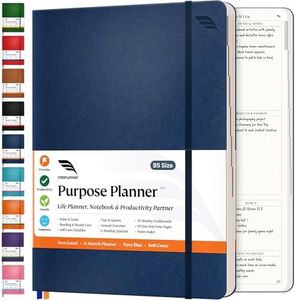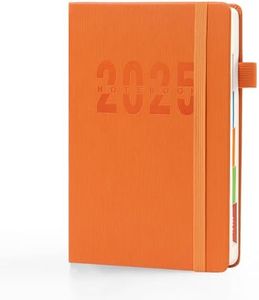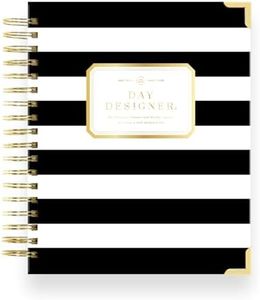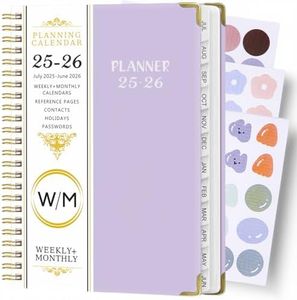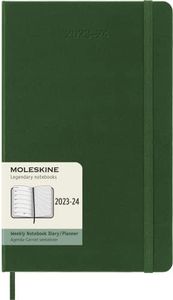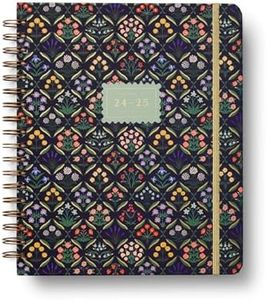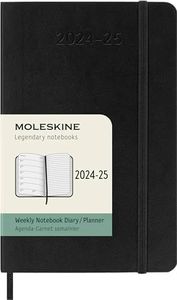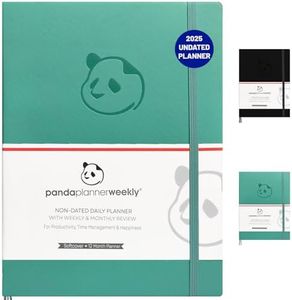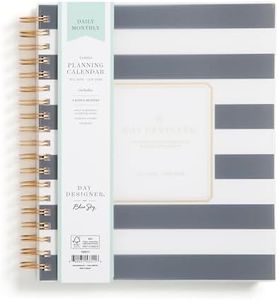We Use CookiesWe use cookies to enhance the security, performance,
functionality and for analytical and promotional activities. By continuing to browse this site you
are agreeing to our privacy policy
10 Best Academic Planners
From leading brands and best sellers available on the web.Buying Guide for the Best Academic Planners
Choosing an academic planner is all about finding the one that helps you stay organized, motivated, and on top of your tasks throughout your school or college year. Rather than being distracted by appearances or trendy covers, focus on the planner’s structure, usability, and how well it supports your personal and academic lifestyle. Consider your schedule, preferences for planning (daily, weekly, monthly), and the specific features that will keep you productive. The ideal planner makes it easy to record deadlines, exams, projects, and personal goals, helping you manage your time efficiently.Planner Layout (Daily, Weekly, Monthly)The layout refers to how the days, weeks, and months are displayed inside the planner. This is important because it shapes how you can organize your schedule. Daily layouts give a page per day, great for detailed planning and busy schedules. Weekly layouts show one week across two pages, making it easier to see the bigger picture and balance assignments. Monthly layouts offer a whole month at a glance for long-term planning. To pick the right one, think about how much detail you want to track. If you have lots of tasks and want to write about your day in detail, choose a daily format. If you just need to see what’s coming up for a class or exam, a weekly or monthly format may be enough.
Size and PortabilitySize determines how much you can write and how easy the planner is to carry. Larger planners offer more writing space, which can be helpful for extensive notes or if you have bigger handwriting. Smaller, compact planners fit easily into bags and backpacks and are lighter to carry around, but they provide less room for writing. Consider your typical load and daily routine—if you’re often on the move, a smaller, more portable planner might be better. If you like to keep detailed notes or don't mind the extra weight, choosing a larger size could work for you.
Dated vs. UndatedThis refers to whether the planner comes with pre-printed dates or if you fill them in yourself. Dated planners are set up for a specific academic year or calendar year; these keep you on track and help you follow a timeline, but you’re locked into those dates. Undated planners let you start anytime and skip periods without wasting pages. If you want structure and don’t plan to skip months, dated is great. If you need maximum flexibility or plan to use your planner sporadically, undated could be the way to go.
Additional Features (Goal Setting, Notes Pages, Contacts, etc.)These extras can add a lot to your planning experience. Sections for goal setting, habit tracking, notes, and important contacts make a planner more useful. Some include motivational quotes, resource pages, or checklists. Decide which features are important for your style—if you like breaking down big goals into smaller tasks, look for planners with goal tracking. If you often need extra space for brainstorming, ensure there are plenty of notes pages.
Paper QualityPaper quality affects how enjoyable and practical it is to write in the planner. Thicker, higher-quality paper resists ink bleeding and feels better for daily use, especially if you use pens or markers. Thinner paper may allow ink to show through, but it keeps the planner lighter. Consider how you’ll use the planner—if you write a lot or use different inks, thicker paper is a safer choice. If you’re mainly using a pencil or don’t mind some show-through, thinner paper may not bother you.
Binding TypeHow the planner is held together affects both its durability and how it lies when open. Spiral-bound planners lay flat and are easy to fold backward, making them convenient for small desks or writing on the go. Hardbound or glue-bound planners are more durable and often look sleeker, but they might not open as easily and can be harder to write in near the binding. Think about where and how you’ll use your planner most—if you need to flip pages often or take quick notes, spiral-bound is a good pick. For something more polished and long-lasting, hardbound works well.


